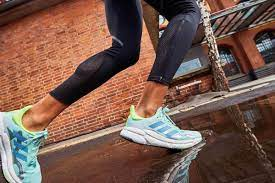[ad_1]
However, some situations will determine whether to run or walk. Injury, obesity, and the goal of your exercise routine, among others. These are some of the reasons someone will decide to walk or run.
But before you decide to add cardio to your exercise routine, continue reading to learn more about these all-important health boosters.
The Benefits Of Running And Walking
Running and walking offer myriad health benefits. Here are a few top ones:
-
Strengthen your Myocardium
Running and walking strengthen our heart muscle, known as the myocardium. A strong
and healthy myocardium reduces any heart and lung-related problems. Regular cardiova-
scular exercise reduces inflammation and improves metabolic health. Running and walking
increase aerobic capacity while maintaining a lower heart rate.
The number of calories you burn after exercising is increased by walking or running. After a
workout, running and walking are excellent strategies to speed up your metabolism and burn
calories. Running is a more demanding activity that burns more calories both during and
after the workout. Walking is a fantastic method to keep active and may help to enhance joint
health, strengthen the cardiovascular system, lower stress and anxiety, and lower the chance
of acquiring chronic illnesses.
Walking or running improves your mood by releasing feel-good hormones called endocanna-
binoids. Melatonin and serotonin are stimulated to enable you to cope with anxiety and
stress. Thirty minutes of either walking or running boosts sleep quality, mood, and
concentration.
-
Boost your Vitamin D Naturally
Exposure to sunlight increases the vitamin D necessary for strong bones. Exposure to sunlight
stimulates our circadian rhythm, which helps as improve our sleep pattern. Moreover, vitamin
deficiency can lead to bone pain, muscle weakness, cardiovascular disease, cancer, and severe
asthma risk.
Research shows that 30 minutes of either walking or running stimulate the immune system and fight off the cold. Regular activities, such as jogging and walking, help strengthen your
immune system and aid in the prevention of colds. Walking and running increase immunecirculation, which enhances your body’s capacity to fend against infections. Running and
walking also help you feel less stressed, which supports a strong immune system.
-
Reduces Pressure On the Eyes
Regular cardio exercises reduce pressure on the eyes by protecting the retinal ganglion cells.
Exercising increases blood flow to the optic nerve and the retina. Blood circulation improves
overall eye health and vision, especially for glaucoma patients.
-
Build Self-Esteem and Self-Confidence.
Walking and running are personal sports that require only a good pair of shoes. Running
further or faster than previously will give you a sense of success. Bring the sprint outside
for an even larger boost in self-esteem. Running outside and soaking in the sun have been
demonstrated in studies to enhance a person’s self-esteem.
Running Vs Walking
Which One Is Better For You?
What works well for someone else may not work for you in terms of health and fitness.
Walking and running have different energy requirements and injury risks. To choose
which is best for you, examine your health, fitness level, whether or not you are injured,
your objectives, and so on. This brief reference guide may be useful:
Running is more beneficial if:
Walking is more beneficial if:
How To Make Your Walking More Intense
Below are a few ways to increase the intensity of your walk:
-
Walk on an incline: Whether it’s hills, stairs, or the inclination option on a treadmill, adding an elevation to your walk will increase the intensity of your walk.
-
Incorporate bodyweight exercises: Walking can become monotonous and boring if done regularly. Every five minutes of your walk, try doing 15 to 20 repetitions of a bodyweight exercise (e.g., push-ups, air squats, jumping jacks). Adding bodyweight exercises to your walk is time efficient as they strengthen your entire body and allow your muscles to recover while walking.
-
Alternate between walking and running: Walk at a moderate pace for five to ten minutes. Then, walk for one minute at a vigorous speed, followed by a one-minute jog. Repeat this pattern for 20 minutes before cooling down with a five-minute stroll at a reasonable pace.
Stay Healthy
Running and walking are superb types of cardiovascular exercise with outstanding health
advantages. Each has advantages and disadvantages, but they all work to keep you at a
weight, healthy improve your cardiovascular health and motivate you to exercise more, all
of which are essential for living a longer, healthier life. Both activities can have a place in your
regard movement regimen, less of whether you’re a seasoned athlete or just lacing up your
walking shoes for the first time.
FREQUENTLY ASKED QUESTIONS
1. How Much Walking Is Equivalent To Running?
Running burns around twice as many calories as walking does for the average individual in
terms of energy expenditure (calories burnt). You need to walk for twice as long or
significantly raise your walking effort to burn the same number of calories when walking
as you would while jogging.
2. What Are The Disadvantages Of Walking And Running?
The primary drawback of walking as opposed to running is that it doesn’t burn as many
calories. To boost your aerobic capacity and burn more calories, you must walk for a
longer distance. Additionally, walking does not need as much use of the upper body as
running does.
On the other hand, running has a larger risk of injury than walking and might result in
muscular discomfort. Running too much too soon when you’re a novice might cause
overtraining syndrome and exhaustion, leaving you exhausted and lacking the enthusiasm
to go out.
3. Is It Better To Walk Or Run On The Treadmill?
One is not superior to the other. Both efficiently increase cardiovascular health and fitness,
whether on a treadmill, road, or trail. By changing the treadmill’s pace and inclination, you
may quickly increase the intensity of your walking or running workout.
[ad_2]
Source_link

